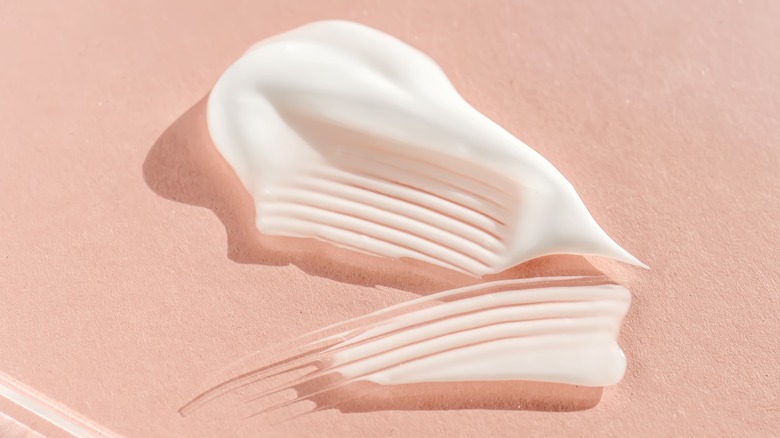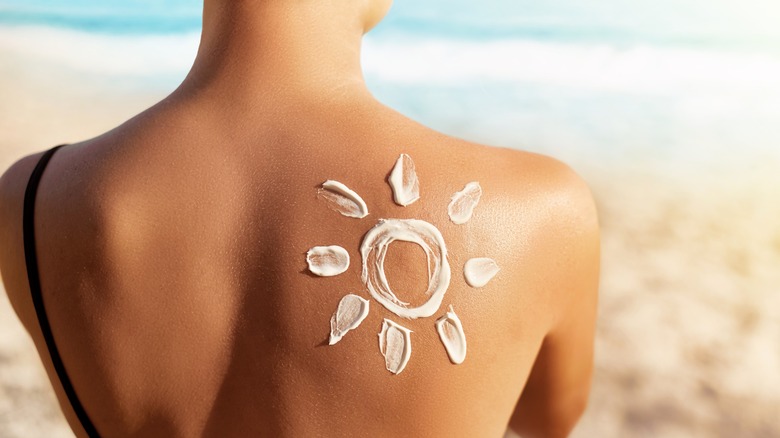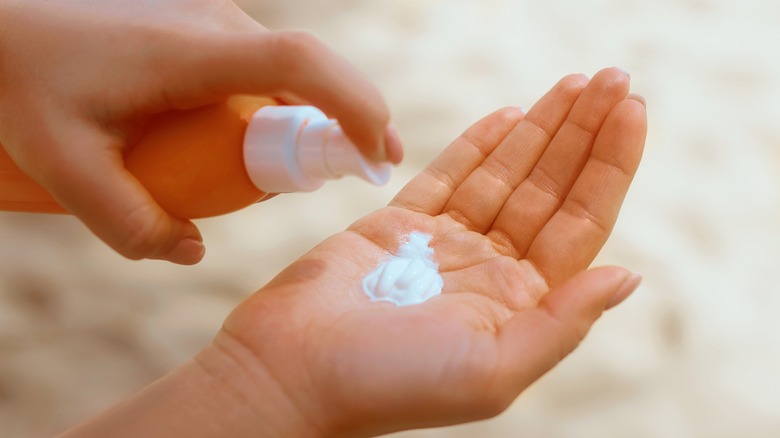What Is Octocrylene And Should It Be In Your SPF?
Despite how much we need the sun, its warmth and vitamin D comes with harmful rays. It is even recommended to wear sunscreen indoors. According to Northwestern Medicine, SPF should be worn even when it is cloudy. Your skin can consume up to 80% of damaging sun rays even when it's not sunny.
From the main SPF options, there are mineral and chemical sunscreens. Mineral sunscreen, sometimes referred to as physical sunscreen, shields your skin from UV rays, according to Healthline. While chemical SPF absorbs the harmful rays before your skin can.
While you know that sunscreen is important, learning what each ingredient in it does is no simple feat. Take, for example, octocrylene, an ingredient that you may find listed on the label of your chemical sunblock. But what is octocrylene, and how can it help with sun protection? Here is what you need to know about this important sunscreen ingredient.
A key sunscreen ingredient
Octocrylene is an active ingredient in chemical sunscreens. According to Medical News Today, it is an organic compound that dissolves in oil. Because it does not dissolve in water, octocrylene continues to protect your skin as you enjoy the ocean waves. However, it is still best to reapply after your swim. This key ingredient contains emollient properties, which help to soften and moisturize the skin.
UV protection is critical, even with sunglasses. When it comes to sunscreen, octocrylene projects against UV radiation and stabilizes other active chemicals, according to Byrdie. It remains approximately 90% effective 95 minutes after application. This is highly effective. To get a comparison, avobenzone, another chemical sunscreen ingredient, wears after half an hour. This effectiveness prolongs your protection against UVA and UVB rays. UVA increases signs of aging like wrinkles, while UVB rays are what cause sunburn. Now that you can pronounce octocrylene and know what it does, find out if it's right for you.
Is octocrylene safe?
Octocrylene is not only in sunblock. This compound is a common ingredient in other cosmetic products, such as lip balms, anti-aging creams, and hair conditioners because of its health benefits, according to Medical News Today. Despite its several benefits octocrylene may not be safe for everyone. Board-certified dermatologist Marie Hayag shared with Byrdie that children and people with sensitive skin are susceptible to allergic reactions using this chemical ingredient. Those breastfeeding can also transfer octocrylene into the milk when applying it to their skin. Mineral sunscreens are a suitable alternative to avoid octocrylene.
In light of those warnings, octocrylene in general is safe. It is FDA regulated and capped at a 10% concentration for products, according to Derm Review. A higher amount of octocrylene can be dangerous. Whether you are considering a mineral or chemical SPF, it is essential to have sunscreen in your routine. It is best to patch test any skincare product to ensure it cooperates with your skin type.


